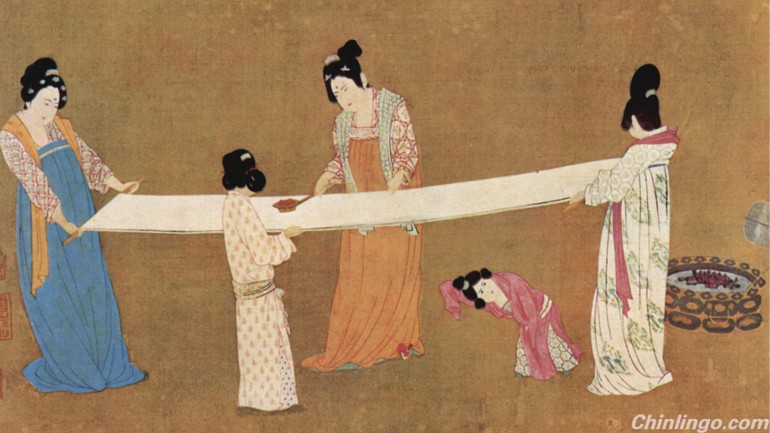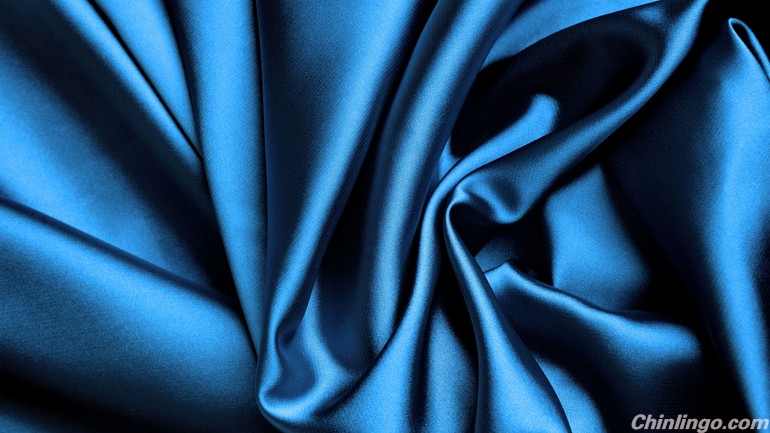
History of Silk
China is the birthplace of silk. Sericulture (the raising of silkworms for silk production) has a history of over 6,000 years. Legend has it that Lady Hsi-Lin-Shih (wife of the Yellow Emperor Huangdi) was having tea under a mulberry tree when a cocoon fell into her cup. As she watched, the cocoon spun a strong white thread. She unwound the strand onto her finger, realizing that it could be used as weaving thread. Thus an industry was born. She taught her people how to raise silkworms, and later invented the loom. Silk production reached a high level of craftsmanship during the Shang Dynasty (1600BC-1046BC).
For more than two thousand years, the Chinese kept the secret of silk to themselves. It was one of the most zealously guarded secrets in history. Anyone found guilty of smuggling silkworm eggs, cocoons, or mulberry seeds was put to death. Silk garments were worn by emperors and royalties and became an indication of wealth. Common people were prohibited from wearing silk. With increased travels and trading, sericulture slowly reached the outside world, first to Korea, then to Japan, India and finally Europe. See introduction to Silk Road or Silk Road Tours.
Silk Producing Regions
Silk is mainly produced in the south of the Yangtze River Delta. Renowned silk producing regions are Jiangsu, Zhejiang and Sichuan provinces. Cities such as Suzhou, Hangzhou, Nanjing, and Shaoxing are well known for their silk industries.
Three Top Brocades
Brocades are made with very high quality silk materials. The three top brocades are Sichuan Shu brocade, Suzhou Song brocade, and Nanjing Yun brocade.
Silk Production
Silk is a delicately woven product made from the protein fibers of the mulberry silkworm cocoon. Silk production is a lengthy process that needs close monitoring.
The silk moths lay around 500 eggs during their life span of four to six days. After the eggs hatch, the baby worms are fed a diet of mulberry leaves in a controlled environment. They have voracious appetites and their body weight can increase substantially. After storing up enough energy, the worms surround themselves with a white jelly like substance secreted from their silk glands. These cocoons resemble white furry balls. After eight or nine days, the worms are killed. The cocoons are lowered into hot water to loosen up the tight protective filaments, which are then unraveled, wound onto a spool and later spun into silk. Filaments can be from 600 to 900 meters long. Several filaments are twisted together to make a thread. The silk threads are woven into cloth or used for fine embroidery.
When used as filling for comforters or duvets, the silk is stretched into sheets and stacked into piles. Silk comforters or duvets are status symbols in China and are popular as wedding gifts. Most tours going through the region will stop at a silk factory. After touring the facility and observing the silk making process, tourists are taken to a display room, shown gift items such as clothing, pillowcases, and comforters to purchase as gifts or for their own use.

Characteristics of Silk
Quality silk is soft and glossy, with clear and symmetrical colors. The best places to buy quality silk are Suzhou, Hangzhou and Shanghai. More inforamtion on Suzhou shopping, Hangzhou shopping and Shanghai shopping. China Highlights' tours to these cities usually include chances to shop for silk and other souvenirs. See our Shanghai Tours , Suzhou Tours and Hangzhou Tours.
Care and Maintenance
Silk, as a protein fiber, is extremely strong, but will fade upon repeated exposure to the sun. As a result, silk fabrics are poor choices for curtains and draperies.
Some silk clothing can be hand washed. Separate the dark colors from the light. Those with sweat stains should be washed in cold water as soon as possible. For best results use a mild detergent and lukewarm water, rinse thoroughly and roll in a towel to absorb the water. If ironing is needed, turn the garment inside out and use a low setting.
Delicate silks should be dry-cleaned. The same goes for multi-color prints or hand-dyed scarves to prevent the colors from running.
Moths can attack silks. For storage, put the items in cotton pillowcases or surround them with breathable fabrics, away from exposure to light or direct sunlight. Avoid storing in plastic since this can trap moisture, which can lead to yellowing or mildew.



 闽公网安备 35020302035673号
闽公网安备 35020302035673号
0 responses on "Chinese silk"